Fade to Black Blu-ray Movie
HomeFade to Black Blu-ray Movie 
Slipcover #1 | Slipcover EditionVinegar Syndrome | 1980 | 102 min | Rated R | Nov 27, 2020
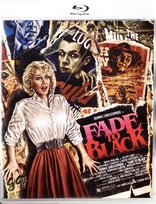
Price
Movie rating
6.8 | / 10 |
Blu-ray rating
| Users | 0.0 | |
| Reviewer | 4.5 | |
| Overall | 4.5 |
Overview
Fade to Black (1980)
A shy, lonely, film geek goes on a killing spree against those who bully and browbeat him, while at the same time, he stalks his idol; a Marilyn Monroe look-alike.
Starring: Dennis Christopher, Tim Thomerson, Gwynne Gilford, Norman Burton, Linda KerridgeDirector: Vernon Zimmerman
| Horror | Uncertain |
| Thriller | Uncertain |
| Comedy | Uncertain |
Specifications
Video
Video codec: MPEG-4 AVC
Video resolution: 1080p
Aspect ratio: 1.85:1
Original aspect ratio: 1.85:1
Audio
English: DTS-HD Master Audio 2.0 Mono (48kHz, 24-bit)
English: Dolby Digital 2.0 Mono (320 kbps)
BDInfo verified. 2nd (final) track is just the "Lossy" track.
Subtitles
English SDH
Discs
Blu-ray Disc
Single disc (1 BD)
Packaging
Slipcover in original pressing
Playback
Region A, B (C untested)
Review
Rating summary
| Movie | 3.0 | |
| Video | 4.5 | |
| Audio | 4.0 | |
| Extras | 5.0 | |
| Overall | 4.5 |
Fade to Black Blu-ray Movie Review
Reviewed by Brian Orndorf November 27, 20201980’s “Fade to Black” offers a fantastic idea for a serial killer story, examining the mental fracture of a film fan who’s been rejected by his one true fantasy, taking out his rage on those who’ve wronged him, becoming screen icons to psychologically deal with his capacity for vicious violence. Writer/director Vernon Zimmerman only manages to get halfway with the concept, but the weirder side of the feature is quite interesting, hinting a wonderfully bonkers picture if Zimmerman paid a little closer attention to structure and casting. What’s presented here has its moments, but it barely feels like a completed movie.
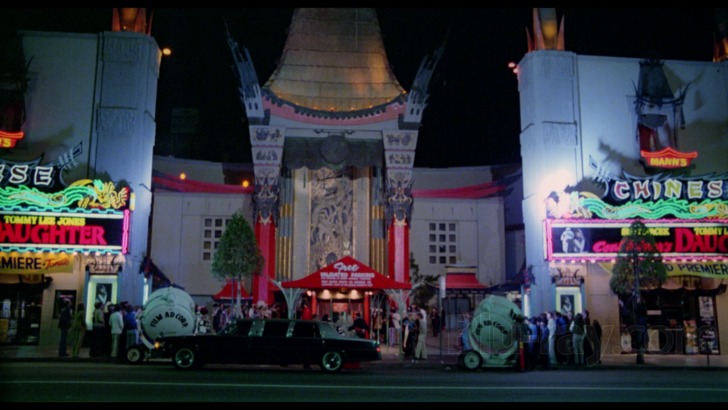
Eric (Dennis Christopher) is an obsessive cinephile who deals with his angry Aunt Stella (Eve Brent Ashe) at home, and works in film distributor warehouse, often bullied by co-worker Richie (Mickey Rourke). While out on his rounds, Eric meets Marilyn (Linda Kerridge), an aspiring model and Marilyn Monroe lookalike who takes a shine to the overly enthusiastic man. Settling on a date, Eric is destroyed when he’s stood up, turning to violence to work out his anger, hunting and murdering individuals who’ve delighted in humiliating him, embarking on these hits while in character as famous movie icons.
“Fade to Black” delivers a vivid understanding of Eric, who lives for the escape of cinema, particularly classic offerings that explore gangster and western tales. He’s a troubled young man trying to participate in the Hollywood machine, but he’s only a lowly warehouse worker, and a hated one at that. The idea of Marilyn’s introduction appears to explore Eric’s contact with his ultimate screen fantasy, putting him into a potentially romantic position with Marilyn Monroe, blowing his mind. But “Fade to Black” pushes away from this subplot, only using Marilyn sparingly, showing more interest in the psychotic break Eric experiences after his object of desire forgets about their date, inspiring him to destroy everyone who’s made him feel small.
Zimmerman throttles the pure B-movie-ness of “Fade to Black” with a worthless subplot featuring Dr. Moriarty (a miscast Tim Thomerson), a criminal psychologist involved in the push to find Eric, also making time to study his boredom at the police precinct (he snorts cocaine and plays the harmonica) and his sexual relationship with Officer Anne (Gwynne Gilford). The character is included to add some expertise to the manhunt elements of the picture, but Zimmerman forgets to add urgency to half-realized detective work. More enjoyable are Eric’s kills, where he suits up as Dracula, the Mummy, Hopalong Cassidy, and James Cagney to murder his enemies with theatrical style. Eric is no real threat, but the absurdity of “Fade to Black” is entertaining, with Christopher going wild in the part, indulging his penchant for overacting to the fullest degree.
Fade to Black Blu-ray Movie, Video Quality 
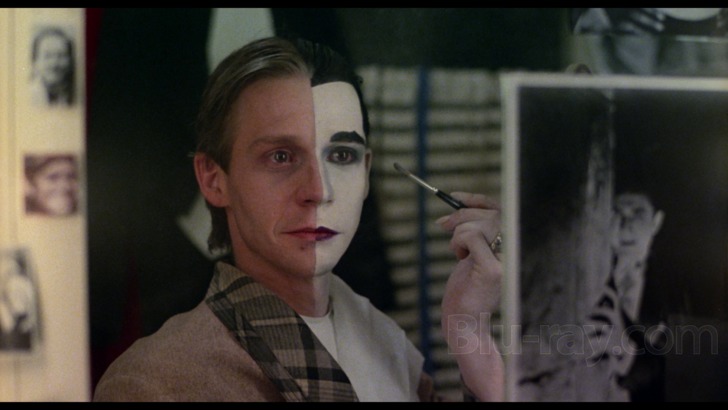
"A new 4K restoration of recently uncovered 35mm negative elements," "Fade to Black" arrives on Blu-ray with an AVC encoded image (1.85:1 aspect ratio) presentation. Clarity is generally quite good, offering a dimensional sense of L.A. locations and a textured look at the numerous costumes, including a rotting mummy outfit. Colors are excellent throughout the viewing experience, bringing life to makeup designs, greenery, and the hot glow of movie marquees. Skintones are natural. Delineation is satisfactory. Grain is heavier but film-like. Source is in strong sharp
Fade to Black Blu-ray Movie, Audio Quality 
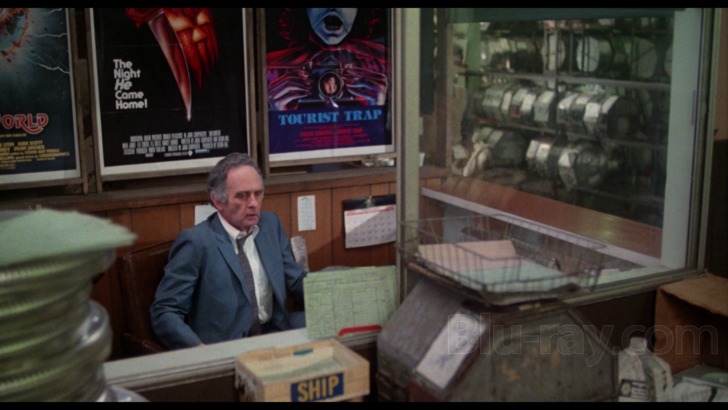
The 2.0 DTS-HD MA sound is a simple blend of music and performances, with dialogue exchanges slightly aged but intelligible. Scoring cues also come through with decent power, adding emphasis to scenes of violence without overwhelming the action. Atmospherics aren't crisp, but crowd bustle registers acceptably, along with sound effects.
Fade to Black Blu-ray Movie, Special Features and Extras 
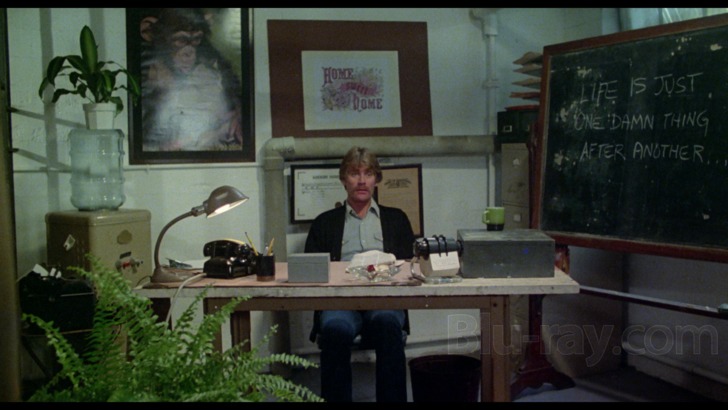
- Commentary #1 features actor Dennis Christopher.
- Commentary #2 features The Hysteria Continues.
- Commentary #3 features film historians Amanda Reyes and Bill Ackerman.
- "Celluloid Heroes" (26:20, HD) is an interview with producer Irwin Yablans, who details his rise in the industry, taking on all jobs before climbing the corporate ladder. Finding himself in charge of test screenings, Yablans elected to become a producer, forming Compass International Pictures, which built its reputation on the back of John Carpenter, releasing "Assault on Precinct 13" and "Halloween." For "Fade to Black," Yablans accepted a more creative role in the production, working on character and casting, enjoying the collaboration process with Dennis Christopher. Production challenges are shared, and Yablans claims he edited the picture himself. Scoring achievements are highlighted, and distribution woes are recalled.
- "A Brush with Darkness" (14:42, HD) is an interview with makeup artist Patricia Bunch, who got her start in the business working on "Galaxina," eventually recommended for employment on "Fade to Black." Bunch shares her favorite looks from the film and details plenty of technical challenges. She also offers her post-movie life, quickly moving to television for steady work.
- "Lying and Dying for the Movies" (17:12, HD) is an interview with Dennis Christopher, who initially refused to act in "Fade to Black," keeping away from a flawed script. Accepting a professional challenge, Christopher goes into detail about his performance choices and thought process. He also shares frustrations with the mummy costume and initial plans for a masturbation sequence, spicing it up with his own ideas. A deleted ending is also revealed.
- "Experimenting with Sound" (12:29, HD) is an interview with composer Craig Safan. With "Fade to Black" part of his early career growth, Safan explores his quest to merge orchestral instruments with synthesizers, coming up with an unusual sound for the feature. Without any feedback, Safan delivered his "Fade to Black" score, pointing out a few themes from the work.
- "Finishing the Story" (8:45, HD) is a brief interview with editor Barbara Pokras, who shares her history with New World Pictures, offered professional opportunities from Roger Corman. She also explores her friendship with "Fade To Black" director Vernon Zimmerman, though her memory is a bit hazy when it comes to sharing information about the feature and her participation in the editing room.
- Audio Interview (31:18) with actress Linda Kerridge explores her years as a model in Australia before turning to Hollywood work, including "Fade to Black." Armed with a Marilyn Monroe look, Kerridge was hired for her appearance, and she shares her feelings about the vocation, including acting challenges and dealing with nerves. Director Zimmerman is recalled, and the interviewee goes into her post- acting life, returning to her love of painting and parenthood. Kerridge also covers location work on "Fade to Black," her faint memories of a deleted subplot from the picture, and her anxiety about navigating the business.
- "Taking the Hits" (11:38, HD) is an interview with special effect coordinator Wayne Beauchamp, who reveals he originally intended to pursue acting in Hollywood. An old industry pro took notice of Beauchamp's military history and invited him to change careers, with the interviewee soon finding work on "Fade to Black." Beauchamp explores several scenes from the movie, pointing out technical challenges.
- "A Shiny Quality" (18:43, HD) is an interview with Marcie Barkin, who shares the origin of her acting career, pulled out of a secretarial job to perform in a car commercial. Pursuing work, Barkin made her way into television, appearing on shows such as "All in the Family," while "Fade to Black" was a different challenge, dealing with a B-movie experience. Barkin offers her thoughts on co-stars, director Vernon Zimmerman, and locations. She also explores the cult longevity of "Fade to Black."
- Still Gallery (10:08) collects poster art, film stills, publicity shots, BTS snaps, lobby cards, and pressbook pages.
- And a Theatrical Trailer (3:07, HD) is included.
Fade to Black Blu-ray Movie, Overall Score and Recommendation 
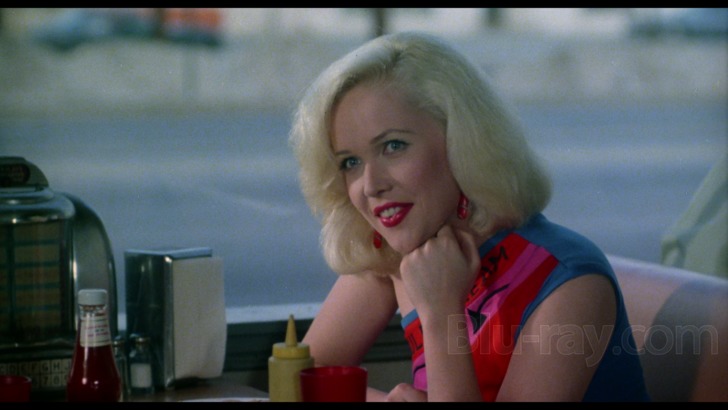
"Fade to Black" offers pieces of a story as Zimmerman loses interest in law enforcement pursuit and Marilyn's presence. He's better with moments than the whole, also providing some time capsule material as Eric makes his way around Los Angeles, with the climax taking place at the Chinese Theater. "Fade to Black" doesn't feel finished, in need of a more direct plot and dimensional characters. It's more of a curiosity than a pleasure to sit through, but as revenge movies go, this one hits a few campy highs before it ultimately unravels.
Other editions
Fade to Black: Other Editions
Similar titles
Similar titles you might also like

976-EVIL
1988

What Keeps You Alive
2018

Before I Wake
2016

Otis
Uncut
2008

The Burning 4K
Collector's Edition
1981

Stitches
2012

Prom Night
Special Edition
1980

Red Christmas
2016

Massacre at Central High
1976

Scary Stories to Tell in the Dark 4K
2019

Wish Upon
Director's Unrated Cut
2017

The Lesson
2015

#Horror
2015

Fear No Evil
1981

Tamara
2006

Dracula A.D. 1972
1972

Silent Madness 3D
Standard Edition
1984

Basket Case 4K
Limited Edition
1982

Frightmare
The Horror Star
1983

Unfriended
2014


